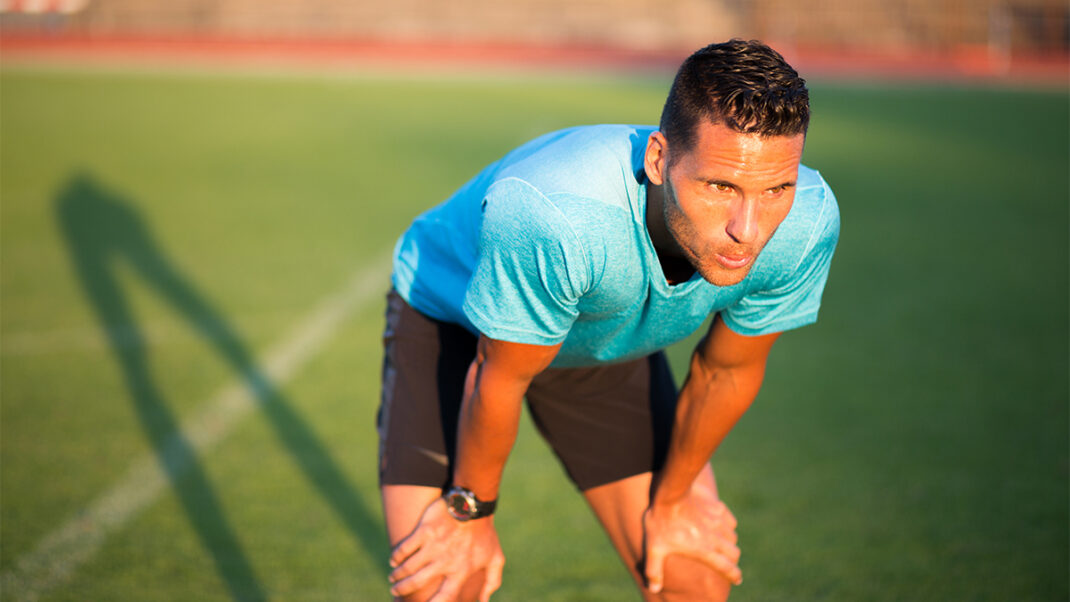Pilates and Personal Training
Will learning Pilates makesense for your business?
The media love it, movie stars swear
by it and clients are increasingly asking for it. Long embraced for its mind-body benefits, Pilates is hot.
In fact, 47 percent of fitness facilities offered Pilates programs in 2001, up from only 10 percent in 1997, according to the 2001 IDEA Fitness Programs and Equipment Survey.
Personal trainers the world over have parlayed Pilates’ popularity into new profit centers for their personal training businesses. Some trainers have learned Pilates and incorporate some of its moves and philosophies into traditional sessions. Others have chosen to specialize exclusively in Pilates. In this article, Pilates personal trainers share their experiences to help you decide if Pilates is a good business opportunity for you. ‘
pilates
pilates
Trainers who have learned Pilates rave about how it has helped their careers and their ability to work with clients.
Michelle Duzois, owner and Pilates personal trainer at Breakthru Fitness Studio in Pasadena, California, was looking for something different. “I was stiff from doing traditional weight training and group exercise. Pilates felt so good. I took Pilates sessions as a gift for myself, to be a student again.”
Duzois agrees. “I’m now better
at evaluating clients, working on their muscle imbalances and seeing what
is happening with their bodies when they are walking and standing.”
Pilates also helps reduce pain. “Many clients think they will have pain forever, but Pilates helps them feel better,” says Maureen Wilson, owner of Sweat Co. Studios Ltd. in Vancouver, British Columbia.
Cathleen Murakami, director
of Synergy Systems Fitness Studio, a training and consulting organization in Encinitas, California, says that Pilates helps athletes who do repetitive movements. “They need to get balance back in their bodies. For example, if you have a cyclist who is always in that forward flexion position, he needs chest opening and extension. Pilates shows you how to prepare his body for change without just yanking him into a new position.”
Because Pilates is getting media attention, people are seeking it out. “Pilates expertise definitely makes you a more marketable trainer because Pilates is so hot right now,” says Duzois.
Pilates also can attract a wide range of clients. “I like Pilates because everybody can do it,” says Carrie Jessee Cohn, MBA, owner and personal trainer at Personal Best Fitness Studio in Overland Park, Kansas. “My oldest client is 80 years old and has degenerative discs in her neck, but she can do Pilates. My youngest client is a 14-year-old cheerleader. I also work with triathletes and women with chronic fatigue or fibromyalgia.”
Wilson has found that people who have been afraid of aerobics will try Pilates personal training sessions. “Our veteran baby boomer exercisers like Pilates because they are looking for a ‘softer’ workout that exercises their core.”
Specializing in Pilates also can increase your income. “Pilates expertise makes trainers more exclusive and their hourly rates go up,” says Garcia. “They’re in higher demand as places look for qualified Pilates personal trainers.” Duzois says that experienced personal trainers who also know Pilates rate fairly high on her facility’s pay scale.
Wilson says that she can find additional work for personal trainers who are Pilates experts. “I get calls from people in the movie industry who are here in Vancouver filming. They often want Pilates training, so my Pilates trainers get the work.”
To discover if Pilates is for you, take a workshop or short course in it. Jeanette Gerlack, owner of Functional Fitness Personal Training in Elmer, New Jersey, attended an IDEA convention a few years ago and took a session taught
by Murakami. “I was fascinated with Pilates so I decided to take more thorough training closer to home.”
After an IDEA convention, Duzois completed a one-week training that included matwork and some reformer work. “This was a great place to start. After the week I was excited about Pilates, but overwhelmed because I knew there was so much more to learn.”
Another strategy many Pilates experts recommend is signing up for one-to-one sessions yourself. Gerlack completed 50 personal sessions before she got certified in Pilates mat training.
“It takes time to learn Pilates,” says Cussaguet. “Being a client will help you get Pilates in your body. Then you need to go through extensive training to understand Pilates philosophy. Just learning individual exercises won’t get you far.”
As an experienced personal trainer and movement expert, you may need to take only short Pilates courses to feel comfortable incorporating some Pilates principles into your training sessions. However, Pilates personal trainers agree that you must take more extensive training to teach pure matwork or equipment sessions.
Training lengths vary tremendously. The Pilates Method Alliance, an international nonprofit organization of Pilates practitioners, currently breaks down training into four categories, ranging from 15 hours of training (considered an introduction) to more than 375 hours of training.
Matwork or equipment training courses may include lectures and demonstrations, observations of one-to-one Pilates sessions, hands-on case studies with one or more clients, apprenticeship work, self-study, self-practice and practice on clients with different body types. Trainings also vary in cost; several trainers interviewed mentioned $3,000 as a cost for comprehensive training. You may take a training course that is spread out over a year or longer, or train intensively in a shorter time frame.
Many Pilates experts recommend first obtaining a mat certification. “Start with the mat certification to see if you like it,” says Mignone. “It usually requires a lesser commitment than an equipment certification, and you can learn core principles to use in weight training or abdominal work.”
Garcia agrees. “Everything in Pilates comes from the floor. Matwork is a good foundation to learn the rationale and function of Pilates exercises. Then you can learn to transfer it from the floor to equipment.” If you like the matwork and want to train people on equipment, an equipment certification, usually a much longer process than a mat certification, is a must.
The right certification course for you will depend on your location, availability, budget and personal needs. Before committing to a training course or instructor, ask the instructor how long he has been training in Pilates and what his background is. If possible, evaluate his teaching style in person. “Pay attention to how a trainer answers your questions,” recommends Garcia. “Look for someone who explains what’s going on in the body.”
Cohn recommends finding a course that matches your educational philosophy. “Some Pilates schools preserve Pilates exercises exactly the way Joseph Pilates taught them. Coming from a fitness background, I know we’ve learned a lot about exercise physiology in the last number of years, so this philosophy didn’t appeal to me. I chose my course because the school’s philosophy was close to mine: Modify the exercise to fit the person’s body as opposed to making the person practice the exercise until she can perform it to perfection.”
You don’t have to use equipment to train people in Pilates, but most trainers who specialize in Pilates do buy at least one piece of equipment or work at a facility that has Pilates equipment. “Make sure Pilates is what you want to do before you buy equipment,” says Murakami. “Then, get to know the equipment before you buy it.”
At first, Gerlack introduced Pilates
to her clients via mat exercises, but then invested in a reformer last year. “The reformer offers more exercise options. One of my clients couldn’t lift her legs off the floor. However, she could press against the reformer and run the carriage back and forth, which she couldn’t have done on a mat.”
If you become serious about offering one-to-one Pilates sessions and invest in an equipment certification, you will need equipment. “The reformer is the standard piece of equipment and the most versatile,” says Mignone. Some trainers only have reformers, while others have equipment such as cadillacs, ladder barrels, barrel chairs (also known as spine correctors), Wunda Chairs and more. You also can purchase small props to use with Pilates. For instance, Mignone says that veteran Pilates expert Ron Fletcher teaches exercises using towels.
Once you decide to buy equipment, which brand is best? “It’s a personal decision,” says Palumbo. “When I bought my equipment, I chose the brand I learned on because I was comfortable with it. Buying Pilates equipment is like buying a car: You need to get in and
test drive it.”
One big consideration with equipment is the expense. “Pilates equipment is incredibly expensive to purchase,” explains Palumbo. “Then you need to make the revenue to pay it off. Many people get loans for equipment or lease it.”
If you don’t have much space for equipment, Palumbo suggests you consider purchasing combination equipment. “For example, there’s one piece of equipment that is a cadillac-reformer combination that converts back and forth.”
Learning Pilates doesn’t mean you have to teach pure Pilates sessions. “While not every trainer wants to become Pilates certified, you can borrow valuable principles from Pilates and integrate them into sessions,” says Clare Dunphy, owner and Pilates personal trainer at Progressive Bodyworks in Boston. “For example, if clients hold their heads out of alignment, extra weight gets put on their necks. Then
if they weight train with this incorrect posture, it’s only a matter of time before they get injured. You can use Pilates principles to help train them to hold their bodies in proper alignment.”
Murakami says you can apply many Pilates principles, such as those of neutral spine and pelvic positioning, into “regular” personal training. “You might use these at the beginning of a session to get core stabilizers fired up before doing bigger movements.”
Gerlack incorporates several principles into her sessions. “After I got my mat certification, I started integrating mat exercises into abdominal training, and clients loved it,” she says. “I now use these concepts throughout the session. When clients perform traditional exercises such as a lat pull-down, I ask them to engage the core at the same time. When they walk on the treadmill, I tell them to pull their core muscles and rib cage in and scapula down. Because I have a reformer, sometimes we do exercises on it. It’s helpful to know both Pilates and traditional training methods so I can vary the training session to correspond with clients’ capabilities on a given day.”
Many trainers who complete extensive training choose to train clients exclusively in Pilates.
Work with a new client usually starts with an assessment. For example, Synergy Systems offers a three-lesson introductory package. The first lesson is 90 minutes and includes a full postural evaluation, program design and a detailed introduction to the fundamentals. Subsequent sessions are 55 minutes.
Pilates trainers love that the work can be tremendously creative, involving different exercises, props and equipment. Because of this, there is no one way to structure a Pilates session. Dunphy programs four sections for every session: reformer work; matwork; work on another apparatus, which varies based on the client’s needs; and a classical ending she learned in her training.
“We progress people gradually and don’t give them a whole lot of bells or whistles at first.”
Palumbo’s base is Pilates, but she incorporates other modalities such
as yoga, traditional fitness exercises, Gyrotonics (a method that stretches and strengthens the body simultaneously with minimal effort, while increasing range of motion and developing coordination) and Body Rolling (a method that uses set routines done with a small ball and empowers clients to develop a deeper relationship with their bodies).
Even when trainers specialize in Pilates, they often suggest clients do other training. “My favorite scenario is when a client trains more than once a week,” says Duzois. “If she comes in twice a week, she can do one Pilates session and one weight training or traditional session. With three times a week, she can do two Pilates sessions and one traditional session or vice versa. With both types of work, we keep her training fresh.”
Just as with traditional personal training, you can use several business models for Pilates personal training.
When Palumbo was first learning Pilates in Toronto, she and the gym she trained at part-time came
to an agreement. “The gym was kind enough to give me space for the Pilates equipment I bought. They were interested in offering their clients Pilates, so they let me do my own thing. They had a generous arrangement for the other trainers and me: We paid the gym only 15 percent of our training fees.”
“I’m a sole practitioner, but am looking into bringing in another trainer,” says Palumbo. “The challenge is finding someone with a similar philosophy and training background.”
Studio owners such as Palumbo often are looking for a second or third trainer. Working out of a Pilates studio is another business model to consider.
As a practicing personal trainer, you won’t need to find clients if you simply incorporate Pilates principles into your work. If you choose to offer pure Pilates sessions, you may be able to transition some of your clients and may need to seek others. How do you attract new clients for Pilates sessions?
“It’s like marketing in general,” says Mignone, who has a master’s degree in business administration and is also a business coach who specializes in working with Pilates businesses. “You are like a lighthouse. Do what you love and people will come to you.”
Mignone says the biggest mistake trainers make when selling Pilates is making it too intellectual. “Trainers often describe the history,” she says. “Clients don’t care about that. Sell
the benefits—what’s in the training
for them.”
If you do Pilates personal training in a fitness facility, ask to teach mat classes, advises Mignone. “If you are working at a facility and not teaching mat classes, you are missing about 90 percent of your marketing opportunities,” she says. “Clients have to experience Pilates. They can’t just watch it and get it.”
Cussaguet recommends giving other staff sample sessions. “When the staff ‘feels’ Pilates from the inside out, it’s easier for them to explain and sell Pilates sessions.”
Wilson has another strategy for selling Pilates sessions—and helping clients learn about Pilates. “If people want to take mat classes, we try to get them to first do three, one-to-one sessions,” says Wilson. “Clients are more successful in the mat classes with the one-to-one experience, and some clients choose to continue with the personal training.”
As career enhancing as some trainers find Pilates, others give it a pass. Stephen S. Roma, chief operating officer for the WOW Workout World Clubs based in Brick, New Jersey, found that his trainers were not interested in becoming Pilates certified. “We tried to get them excited about Pilates, but they never felt 100-percent comfortable with the equipment. They felt like they needed to shift their fitness paradigms and set aside current beliefs to learn Pilates.”
If you want to train in Pilates just to make more money, then it’s probably not for you. Many trainers interviewed for this article reported charging the same for Pilates sessions as for personal training sessions. While some did charge more, part of their extra income went toward recouping training and/or equipment costs.
Be forewarned that you need to be well-versed in anatomy before you start Pilates training. “At my Pilates mat certifications, I’m amazed at the number of trainers who can’t define flexion and extension or who don’t understand basic biomechanics,” says Murakami. “Without this knowledge, learning Pilates will be much more challenging.”
Talk to trainers who have embraced Pilates and you are talking to people who are passionate and dedicated to the form. They emphasize how important it is to get educated in Pilates and not misrepresent yourself as an expert without first obtaining proper training. “Consumers are going to start to notice the difference in training of Pilates experts just like they did with personal trainers,” says Wilson.
If you want to learn Pilates, go for it! Just be patient with yourself when you are learning. “It’s not easy,” says Murakami, who’s been training in Pilates for more than 10 years. “If you’re coming from a traditional fitness background and don’t have much experience in softer modalities like t’ai chi, you are used to feeling your body respond in
a particular way and focusing on the surface. It takes time to get used to working deeper muscles.”
IDEA PERSONAL Trainer march 2002
Joanna Speller, BSC PT, works with several postrehab clients at her business, Go Physio in Hamilton, Ontario. “I see clients who have had ankle surgery, whiplash, spinal fusion, lateral elbow pain, scoliosis and more. We work on the misalignment that caused the injury in the first place.”
Speller is immensely qualified to help postrehab clients, given her physical therapy degree and specialization in Pilates. However, Speller says that Pilates personal trainers also can train postrehab clients.
“Trainers need to work with a physical therapist who creates a program that will help them avoid contraindications and continue rehabilitating the client’s specific injury,” Speller explains. “How well Pilates personal trainers can work with postrehab clients depends on training and experience. Some trainers have so much experience and a good understanding of anatomy that I could tell them to strengthen a client’s rotator cuff and they would know exactly what to do. Others wouldn’t. The key is knowing how to modify exercises and what to avoid.”
Some Pilates training programs offer postrehab courses to prepare Pilates trainers for this type of work. Carrie Jessee Cohn, MBA, owner and personal trainer at Personal Best Fitness Studio in Overland Park, Kansas, had no idea that postrehab clients would constitute such a big percentage of her clientele when she opened her business. “About 45 percent of my clients are postrehab clients, with problems such as ACL reconstruction surgeries and back injuries. A client who is a chiropractor fell in love with Pilates and started referring clients to me.”
Clare Dunphy, owner and Pilates personal trainer at Progressive Bodyworks in Boston, estimates that postrehab clients account for 25 percent of her business. “I get referrals from chiropractors, orthopedists and physical therapists. I’m also establishing a rapport with professionals at a spine clinic.”
Why is Pilates so effective for postrehab training? “Normally patients with pain are very uptight and connected to their pain. Pilates trainers try to get them to relax,” says Angela Sundberg, MS, owner of Bodyscapes in Scottsdale, Arizona. “We teach them an efficient breath pattern, try to find muscle imbalances and focus on reactivating the muscles that are not working at the appropriate time with the appropriate effort,” she adds.
“Pilates is a great way for personal trainers to work hand in hand with the rehab
community, because most Pilates instructors have good to great evaluation skills,”
says Sundberg, who trains some players on the Arizona Diamondbacks baseball team. “They can use these skills not to diagnose or treat the client, but to get him to move
more comfortably.”
Speller thinks that using Pilates in postrehab efforts will continue to be a trend. “As more medical professionals learn about the benefits of Pilates, its use in rehab will grow. There’s a movement toward lumbar and core stability throughout the rehab world, so therapists are looking at different forms of exercise such as Pilates. Therapists also are becoming more comfortable with Pilates as they read about the research being done
on it.”
IDEA PERSONAL Trainer march 2002 pilates
IDEA PERSONAL Trainer march 2002
Training
All American Pilates
www.pilatescertifications.com
(561) 795-1219
The Physcial Mind Institute www.themethodpilates.com
(505) 988-1990 or (800) 505-1990
The Pilates Coach www.thepilatescoach.com
(775) 324-0131
Pilates Method Alliance www.pilatesmethodalliance.org
(866) 573-4945
The Pilates Studio/Guild www.pilatesstudio.com
www.thepilatesguild.com
(800) 4-PILATE(S)
Equipment
Balanced Body Inc.
www.pilates.com
(800) PILATES or (916) 454-2838
Peak Body Systems www.peakbodysystems.com
(800) 925-3674 or (303) 998-1531
Stott Pilates (training and equipment)
www.stottpilates.com
(800) 910-0001 or (416) 482-4050
GoodBody’s PilateSystems
www.goodbodys.com
(877) 528-3335 or (214) 528-3335
IDEA PERSONAL Trainer march 2002 pilates IDEA PERSONAL Trainer march 2002IDEA PERSONAL Trainer march 2002





